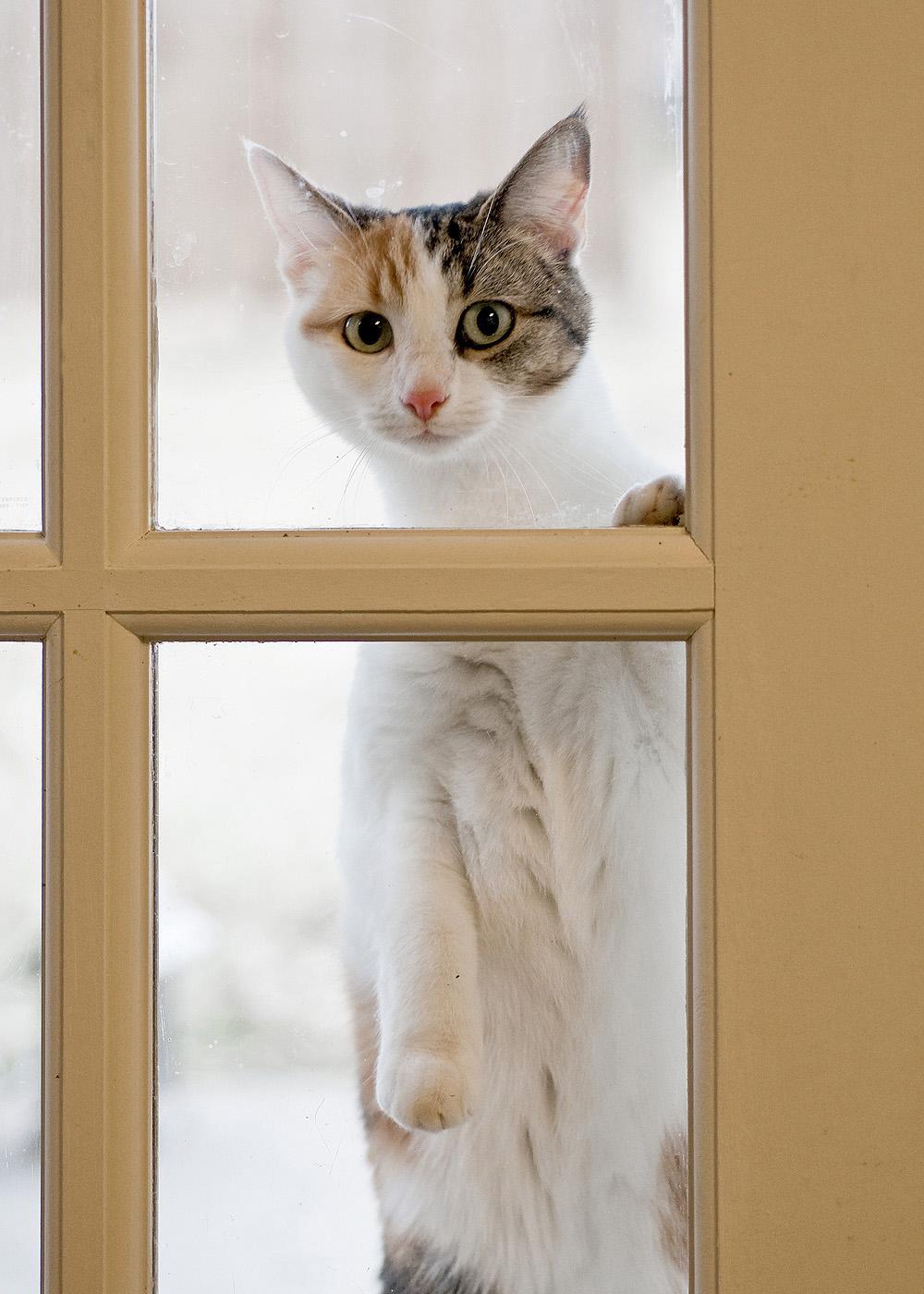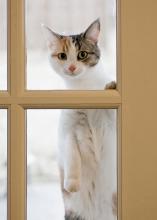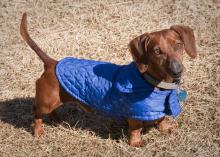Information Possibly Outdated
The information presented on this page was originally released on January 8, 2010. It may not be outdated, but please search our site for more current information. If you plan to quote or reference this information in a publication, please check with the Extension specialist or author before proceeding.
Animals need protection when temperatures drop
By Patti Drapala
MSU Ag Communications
MISSISSIPPI STATE –Although many pets and livestock grow heavy winter coats and have thick foot padding, they still need human protection when temperatures drop.
Animal specialists at Mississippi State University have tips that pet owners and livestock producers can follow to keep their animals healthy and comfortable in extremely cold weather.
Dogs and cats, particularly those that live inside but often venture outdoors, are vulnerable when weather turns cold. They often need additional food and fresh water to maintain their body heat. Large dogs bred for cold weather, such as huskies and Samoyeds, can tolerate extremely cold temperatures if already acclimated to outside weather. Smaller-sized pets, such as Chihuahuas, cannot.
Very small breeds of dogs and most cats consider going out into cold weather an irrational past-time,” said Dr. Mark Russak, a small animal primary care veterinarian at MSU’s College of Veterinary Medicine. “A pet such as a Chihuahua can’t live outdoors in the winter.”
Large dogs that are kept outdoors should have a solid, protected doghouse or other shelter that keeps out wind, rain, snow and cold. The shelter should face south and have insulation, a blanket or hay for warmth. Keep bowls in an area that prevents water or food from freezing.
Some dogs will tolerate doggie sweaters or wraps when taken outdoors for bathroom breaks or exercise. A few will wear hats with flaps to protect ears that are cropped and come to a thin point at the tips.
Cats that escape outdoors may seek shelter by climbing inside a vehicle engine for warmth and security. Many are injured by the fan belt when the engine cranks.
“Thump your car’s hood on cold mornings,” said Dr. Joey Burt, chief of CVM’s Community Veterinary Services. “Your neighbor’s cat may be nestled against the engine, and thumping the hood will get the animal to head for safety.”
Antifreeze and ice-melting chemicals often have a sweet taste. When these products accumulate in puddles on garage floors and sidewalks, the smell and taste often cause dogs and cats to lick these products.
“Antifreeze ingestion is one of the most common and lethal poisonings seen in pets during winter,” said Dr. Cory Langston, veterinarian and pharmacology specialist at MSU’s veterinary college. “As little as one teaspoon is often fatal to cats, and animals that ingest this poison need emergency treatment.”
Animals that stay outdoors, such as horses, cows and hogs, require additional feed, fresh water and adequate shelter to keep warm and maintain good health. At a minimum, producers should install a windbreak to prevent additional body heat loss.
“Range meal, molasses tub products and protein blocks can help ruminants meet their energy requirements in extreme temperatures,” said area livestock agent Kipp Brown of MSU’s Extension Service. “Use caution when providing supplemental feed products to horses, and use products that are labeled for those animals.”
Maintain adequate heat levels in barns, sheds and pens, and provide extra bedding.
“Extremely cold temperatures have a greater effect on livestock than humans, primarily because these animals live outdoors,” Brown said. “Provide a healthy environment for your animals and use common sense to meet their needs during cold weather.”




